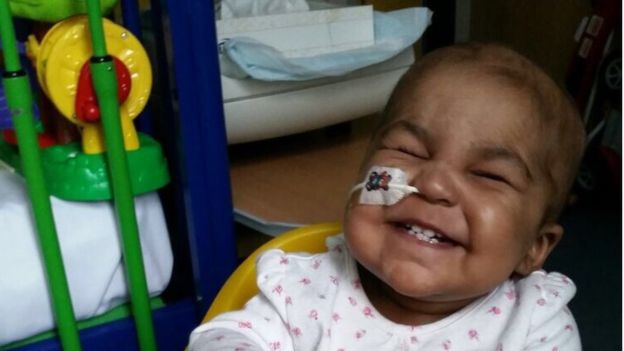Layla Richards, an 18 month old girl from London, was diagnosed with a highly aggressive form of leukaemia at just 14 weeks old. Now, thanks to the doctors at the Great Ormond street hospital, after only a matter of months she is well on her way to recovery following pioneering treatment. Could her ‘near miracle’ recovery pave the way for a wave of revolutionary cancer treatments?
Layla’s Story
Layla was born, seemingly, a healthy 7Ibs 10oz baby girl; however, at 14 weeks Layla’s parents began to notice something was wrong. Her heart rate began to dramatically increase – she started to cry inconsolably and would no longer feed. After initially believing it be a stomach bug, Layla was eventually diagnosed with Acute Lymphoblastic Leukaemia – a common childhood cancer.
Acute Lymphoblastic Leukaemia affects 1 in every 2000 children, with symptoms typically appearing in those aged between two and five years old. Normally, a healthy person’s bone marrow produces stem cells, which develop into red blood cells and platelets before being released into the blood. However, Acute Lymphoblastic Leukaemia causes the bone marrow to release immature white blood cells known as blast cells, resulting in a reduced number of red blood cells prompting symptoms of anaemia. The outlook for children who develop Acute Lymphoblastic Leukaemia is usually good; nearly all of those diagnosed go into remission and around 85% can be completely cured. But Layla was found to have an extremely aggressive form of the leukaemia and, after several rounds of chemotherapy and a bone marrow transplant, the cancer returned.
On her first birthday doctors told Layla’s parents they had run out of options, suggesting palliative end of life care. Professor Paul Veys – director of the Bone Marrow Transplant Unit at Great Ormond Street Hospital – said, “In Layla there was a lot of leukaemia still bubbling in her system. Really at that point the situation was hopeless. Normally we say the family should pursue a palliative care option because, normally, what you try fails and you lose time in hospital.” Despite this, Layla’s parents refused to give up on their daughter. “We didn’t want to accept palliative care and give up on our daughter, so we asked the doctors to try anything – even if it hadn’t been tried before” explained Miss Foley, Layla’s mother.
The Last Hope – Gene Therapy
The medical staff at Great Ormond Street hospital, along with the biotech company Celletics, gained ethical permission to try a highly experimental therapy which had only been trialled in mice. The proposed treatment used advanced gene editing to develop designer immune cells. Genes are first added to donor immune cells, effectively causing them to seek out, and kill, leukaemia cells. Next – using a cutting edge technique called TALENs – the specialists switch off two genes; one to ensure that the donor cells are not rejected by Layla’s body and another to ensure the new immune cells are not wiped out by the powerful drugs, essential to Layla’s recovery. Layla was injected with a 1ml infusion of the genetically engineered cells, in a procedure that took only 10 minutes.
Initially it was unclear if the treatment had worked, but within weeks she developed a rash – a clear sign that the desired response was occurring and she was beginning to fight off the Leukaemia. After three months the doctors conducted a bone marrow transplant which helped restore her immune system. Today, Layla is happily at home with her parents and sister, alive and cancer free.
A New Step in Cancer Treatment?
Layla’s reaction to the revolutionary treatment ranks as one of the most remarkable things Dr Paul Veys has witnessed during his career – “We’re in a wonderful place compared to where we were five months ago, but that doesn’t mean cure. The only way we will find out if this is a cure is by waiting that one or two years, but even having got this far from where we were is a major, major step.” This is the first time that TALENSs has been used for cell editing and only the second time in the world that gene editing cells have been used. The progression of gene editing technology has been phenomenal, although much more research is needed to prove that this treatment is safe and effective. Hopefully this success story will aid in the development of further treatments for a range of cancers and inherited disorders, becoming a lifesaving cure for more children like Layla.
Amy Cleaver
[Image: Great Ormond Street]

